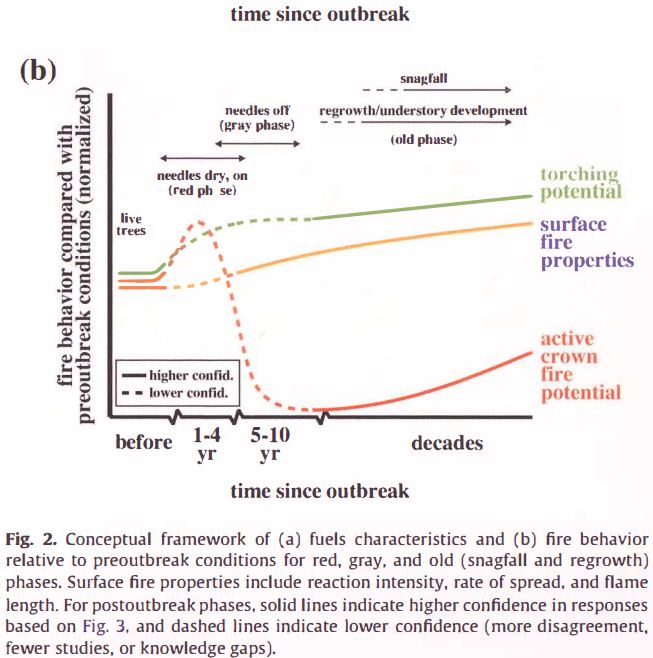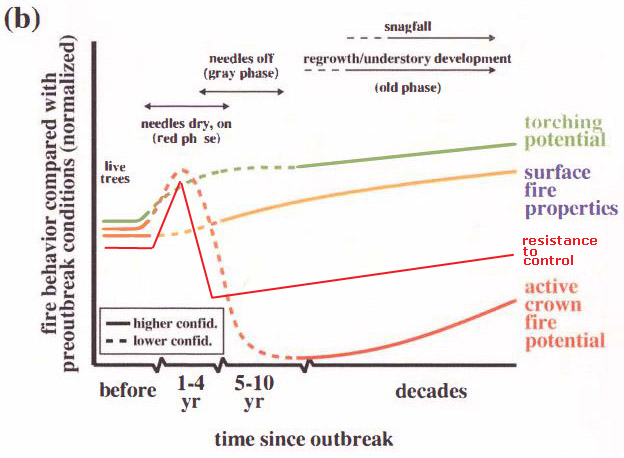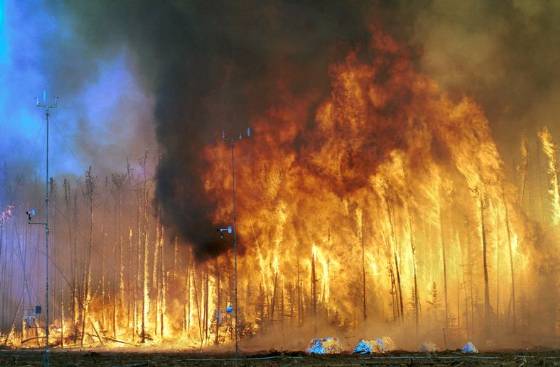After the Rim Fire, water now worries land managers
The 257,000-acre Rim Fire is now 100 percent contained, at a cost of $127 million, but the effects of rain on barren slopes is the newest worry for land mangers. Over 90 percent of the fire burned in the Tuolumne River watershed in and near Yosemite National Park in California. The loss of vegetation and exposure of the soil could lead to erosion and increased water runoff that may lead to flooding, increased sediment, and debris flows.
The Burned Area Emergency Response (BAER) team has been working in the Rim Fire area for weeks and continues to assess the needs and implement emergency stabilization measures. Projects the team is working on include:
- Improving road drainage and storm-proofing roads at risk of failure from increased flooding.
- Stabilizing and repairing trails.
- Monitoring for and treating invasive weeds.
- Mulching and chipping to protect fragile soils.
Two dry years in a row have worried land managers but now the thought of a heavy rain has them concerned.
Acid frogs are not greatly affected by fires
Often we hear of people who suffer mental anguish over the plight of animals being affected by wildfire — they assume that Bambi and others die by the thousands. But most creatures have adapted to fire over tens of thousands of years.
Recent research in Australia concluded that acid frog “populations did not suffer adversely from moderate intensity fires as suitable refuges, including standing water, were available. All species were present shortly after fire with subsequent successful reproduction occurring once wetlands were sufficiently inundated.”
You can obtain a copy of the taxpayer-funded research by paying the International Journal of Wildland Fire, published by CSIRO, $25. The researchers work for Griffith University, which apparently does not believe in the concept of Open Access to taxpayer-funded research.
New Hampshire may ban fire balloons
New Hampshire may become the 26th state to ban fire balloons, which are sometimes called sky lanterns or Chinese lanterns.
These incendiary devices use burning material such as rubbing alcohol or a candle to heat the air in a bag made of tissue paper or very thin plastic. The heat makes the device lighter than air causing it to rise into the sky, staying aloft for 10 minutes to 2 hours. They can be very pretty to watch especially when they are released dozens or hundreds at a time such as at a wedding or some other celebration. The problem is they are uncontrollable and sometimes start wildfires or structure fires.
The National Association of State Fire Marshals adopted a resolution this year urging states to ban the sale and use of the devices. Below is an excerpt from their position on the issue:
…Therefore, be it resolved that the National Association of State Fire Marshals strongly encourages states to ban the sale and use of sky lanterns through whichever means is most expedient for them. Banning the use of sky lanterns is important to help control homemade devices as well as those purchased from various sources.
New Hampshire state Senator Nancy Stiles has introduced a bill to prohibit them in her state. Below is an excerpt from USA Today:
Stiles, a Republican, filed her bill at the request of Rye Fire Chief Skip Sullivan. Sullivan said people have lit the lanterns at the beach thinking they would float out to sea only to have them blow inland. One landed in a selectman’s yard but burned out and did no damage, he said.
Sullivan said fire officials want a law “primarily for the fact that when you light these and send them off, it is an open fire you’re sending off.”
He added, “When these things come down, are these people going to clean up the mess they leave behind?”








